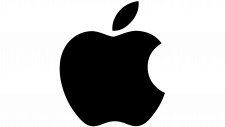Bluetooth Logo
Bluetooth is a wireless technology standard for exchanging data over short distances using short-wave UHF radio waves. It connects and exchanges data between devices like phones, laptops, and audio devices, creating personal area networks with high levels of security. Bluetooth is notable for its worldwide availability, low power consumption, and ease of connectivity, enabling a wide range of applications from hands-free headsets to data synchronization.
Meaning and history
Bluetooth technology, named after the 10th-century Danish king Harald Bluetooth, symbolizing connectivity and unification, was conceived in 1989 by Nils Rydbeck and Johan Ullman. Developed by Ericsson in 1994 as a wireless alternative to RS-232 data cables, it initially aimed to develop wireless headsets. In 1998, the Bluetooth Special Interest Group (SIG) was formed, comprising leaders like Ericsson, Intel, Nokia, and IBM, to standardize and promote Bluetooth.
The first Bluetooth-enabled mobile phone, the Ericsson T36, was introduced in 2000, but later released as T39. This marked the beginning of Bluetooth’s integration into mobile phones, revolutionizing wireless communication. By the early 2000s, Bluetooth had expanded its capabilities, supporting a variety of devices including laptops, audio devices, and automotive systems.
Over the years, Bluetooth evolved through several versions, enhancing speed, range, and security. Bluetooth 1.0 and 1.0B had significant issues, but by 1.1, many were addressed. Version 2.0, introduced in 2004, significantly improved data transfer rates. Subsequent versions, like Bluetooth 3.0 and 4.0, introduced in 2009 and 2010, respectively, brought high-speed data transfer and low energy consumption, catering to a broader range of applications.
Bluetooth technology is ubiquitous, integral in billions of devices worldwide. Its ongoing evolution continues to enhance connectivity, with a focus on IoT (Internet of Things) applications, smart homes, and more efficient, secure communication. Bluetooth’s journey from a simple wireless alternative to a global standard showcases its adaptability and enduring relevance in an increasingly connected world.
1998 – 2016
The logo features a stylized ‘B’ shaped as a bind rune, merging the Younger Futhark runes ‘Hagall’ (or ‘H’) and ‘Bjarkan’ (or ‘B’), representing the initials of Harald Bluetooth, the king who unified Denmark and Norway. The emblem is encased within an oval, often rendered in a distinctive blue shade, symbolizing the wireless connectivity. The design conveys a sense of interconnection and technological unity, reflecting the purpose of Bluetooth technology which is to unify various devices through wireless communication.
2016 – Today
This image showcases the modern Bluetooth logo, a white runic-like symbol within a blue oval, next to the bold black word “Bluetooth.” The emblem merges the Scandinavian runes resembling the English letters ‘H’ and ‘B,’ initials of Harald Bluetooth, symbolizing unity. Compared to the earlier logo version, this design is paired with the brand name, providing clear identification. The color scheme remains, but the typography adds a layer of modernity and direct branding, enhancing recognition and reinforcing the logo’s identity in the digital age.













